Despite its popularity among Western travellers, Cambodia maintains its status as a relatively undiscovered eastern destination. Tourists are progressively unearthing the tribal communities and enigmatic Khmer temples of off-the-beaten-path regions like the far north and the untamed Cardamom Mountains, which have stayed undiscovered because they are isolated from the masses of Thailand to the west.
However, there are a few tourist hotspots in this part of Southeast Asia, such as the lichen-covered halls of Angkor Wat (recognised by UNESCO) and the glistening beaches of the Kep Peninsula. Meanwhile, Phnom Penh provides an interesting and fascinating peek into the atrocities of Cambodia’s 20th-century history in addition to its temples and royal court chambers, while locations like Sihanoukville and Battambang tick over to the cacophony of travellers or the swirl of the Thai Gulf.
If you’re looking for a vacation spot that offers a little bit of everything—adventure, adrenaline, history, culture, and tropical relaxation—this may be it.
Why don’t we check out some of Cambodia’s top attractions?
1. Angkor
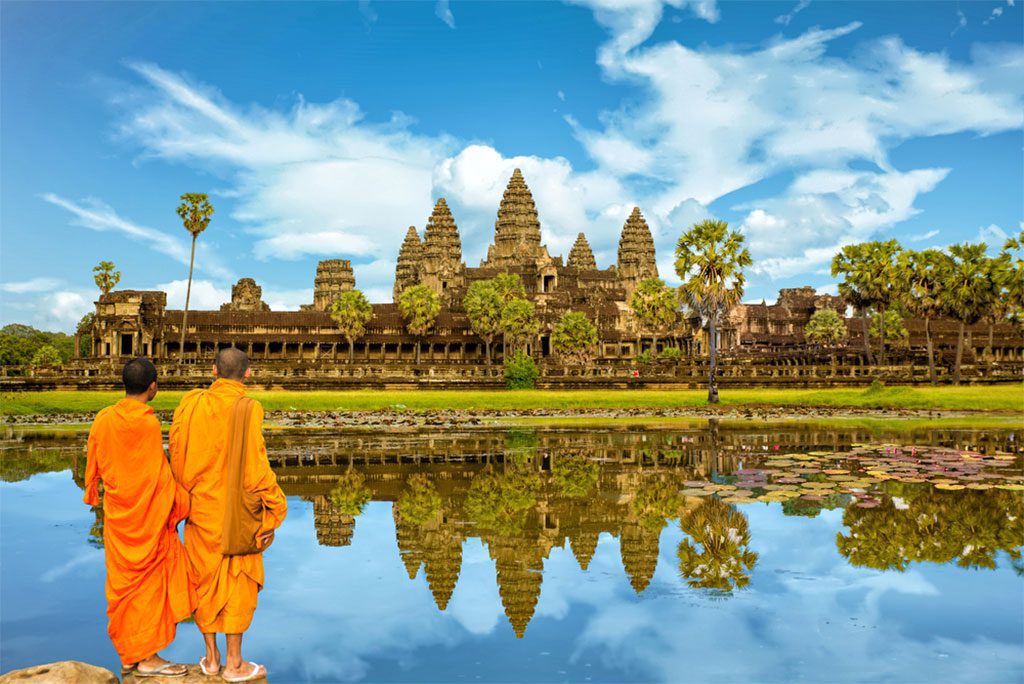
Angkor Wat Temple Complex in Cambodia.Image source: Sakdawut Tangtongsap/Shutterstock.com
One of the best things to do in Cambodia is to visit Angkor, the site of the world-famous Angkor Wat temple complex.
Because of the famous pagodas and vine-covered stupas that UNESCO has recognised, it is also one of the busiest places in the country.
To view this global wonder, though, it is well worth leaving Siem Reap for a while and facing the throng.
It is surrounded by flooded rice farms and deep woods, yet it rises from the tree line as a patchwork of ancient Khmer towers and stunning former Hindu temples.
This site is now dominated by the chanting of Buddhist monks and the gasps of tourists as they make their way through the elaborate base reliefs and the massive sandstone statues of fabled monsters.
2. Sihanoukville
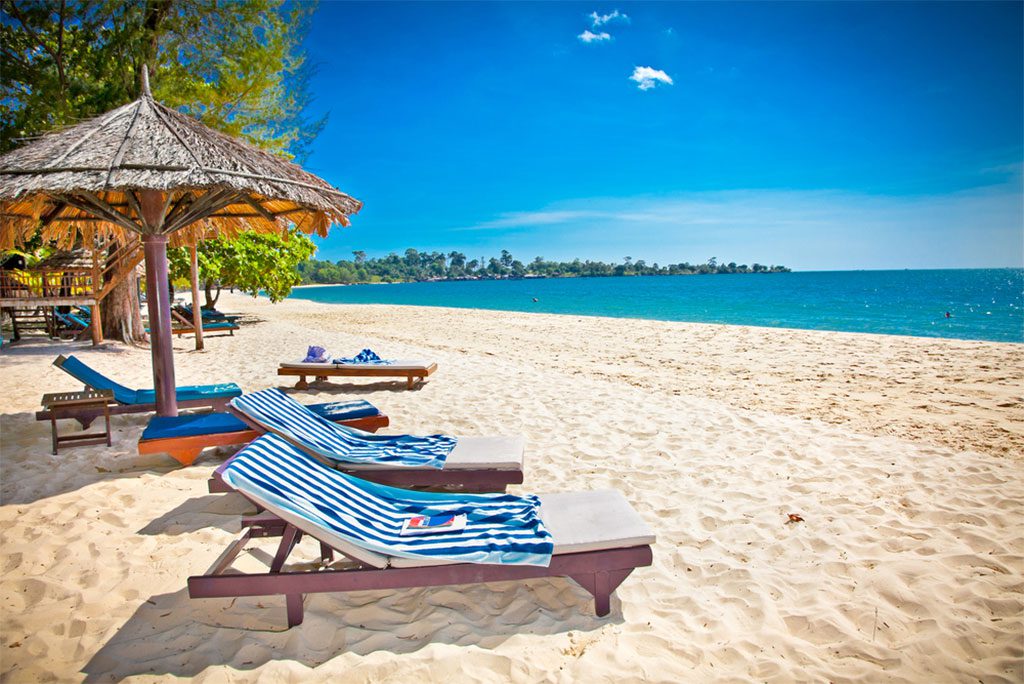
The stunning tropical beauty of Sokha Beach in Sihanoukville, Cambodia. Image source: Aleksandar Todorovic/Shutterstock.com
Across the Gulf of Thailand, you’ll find the backpacker beach towns of Thailand, and Sihanoukville is Cambodia’s response to them.
It’s a chaotic beach town with bamboo beer bars and tin-roofed hostels that flow out onto the beaches, exuding a chill atmosphere that’s a nice change of pace from the country’s other major cities.
Since many Ochheuteal businesses provide both lounge chairs and a wide variety of water activities, the beaches are a popular area to spend the day and the evening.
If you’re looking for peace and quiet, you can either make a beeline for the less-visited Otres Beach or pay the entrance charge to visit the neighbouring, more private Sokha Beach.
3. Phnom Penh
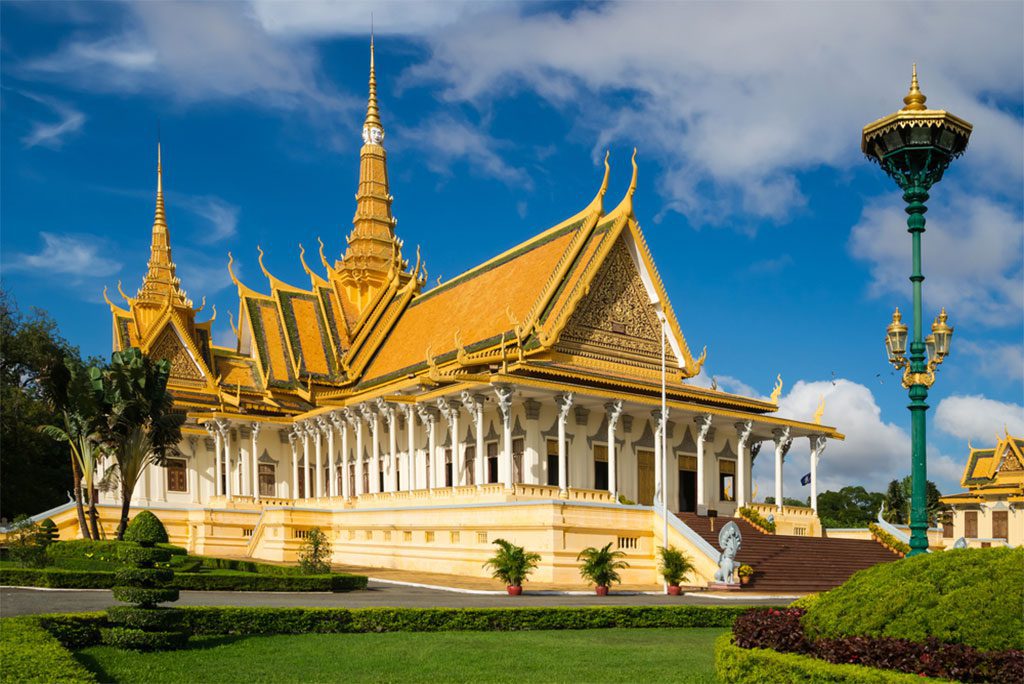
The grandeur and beauty of the Royal Palace in Cambodia’s capital, Phnom Penh. Image source: Ralf Siemieniec/Shutterstock.com
In Phnom Penh, a city in flux, barrios of haphazard shack dwellings coexist with gilded temples of gold leaf and 21st-century motorways in Phnom Penh.
As a result, it’s an ideal place to learn about Cambodia as a whole, as the nation strikes a nice balance between its ancient past and modern present.
The Royal Palace, with its Silver Pagoda and other glistening buildings, is undoubtedly the showpiece.
Sisowath Quay is a hive of activity and offers a glimpse into local life with its assortment of marketplaces and picnic areas along the Mekong.
The so-called Killing Fields may be found on the outskirts of town; they are chilling and unforgiving monuments to the atrocities committed in Cambodia in the twentieth century.
4. Kratie
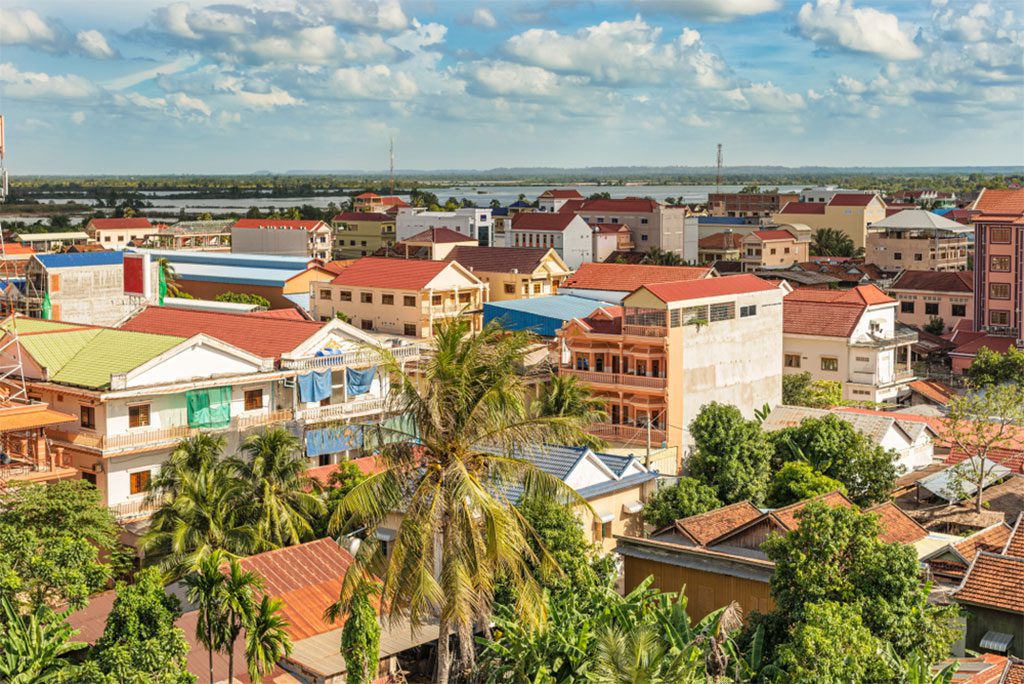
A breathtaking view of the town of Kratie, Cambodia. Image source: Marek Poplawski/Shutterstock.com
This chill town is slowly but surely rising to become one of Cambodia’s genuine backpacker destinations, defined by the meanders of the Mekong River as it gushes towards the delta and the South China Sea in the south-east.
Affordable wood longhouses and down-to-earth guesthouses; ancient ruins at Sambor; and waterfront traditional artisan markets all contribute to the area’s popularity among budget tourists.
On the other hand, Kratie is also well-known as a prime destination for seeing the Cambodian river dolphin.
The Mekong River is home to a variety of beautiful creatures, and daily excursions are available from the docks to go on the hunt for them.
5. Siem Reap
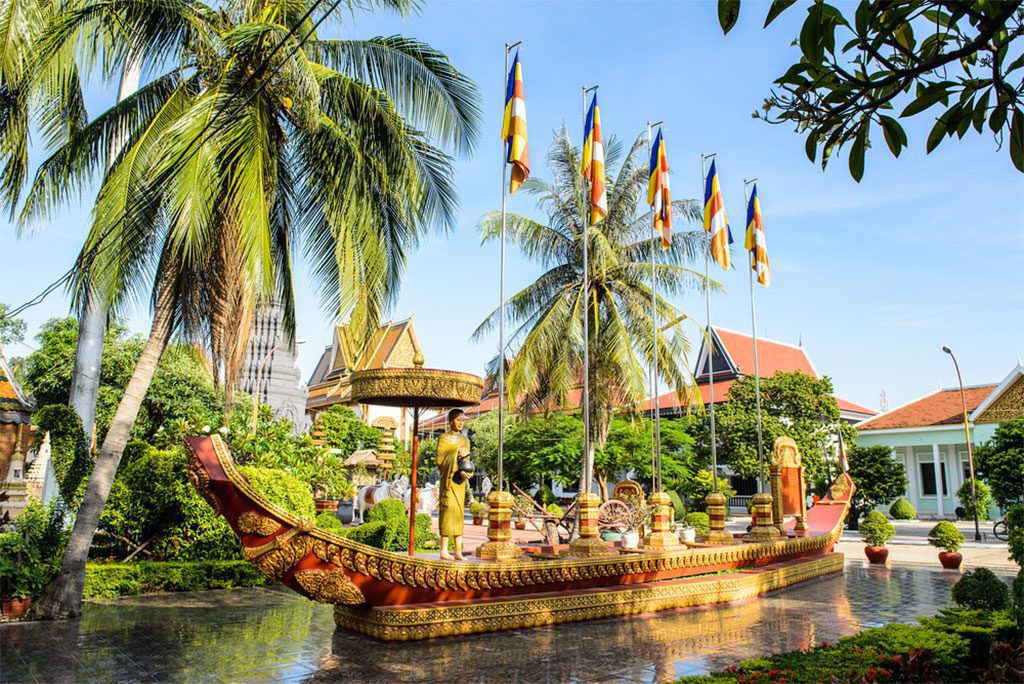
The stunning beauty of the Prumrot Vat Temple in Siem Reap, Cambodia. Image source: Anton_Ivanov/Shutterstock.com
Most visitors to Siem Reap go there in order to see Ankgor Wat, the temple complex recognised as a World Heritage Site by UNESCO.
This one, though, has flourished into a pleasant destination in its own right, primarily as a result of the inflow of people in the last several decades.
Explore the old town and its exquisite French homes and charming Chinese boutiques, all while being surrounded by the raucous energy of Psah Chas market (great for sizzling noodles soups!) and innumerable backpacker pubs (look for the appropriately-named Pub Street). The Cambodia Landmine Museum and the War Museum Cambodia are both excellent museums well worth seeing while in Siem Reap.
6. Koh Ker
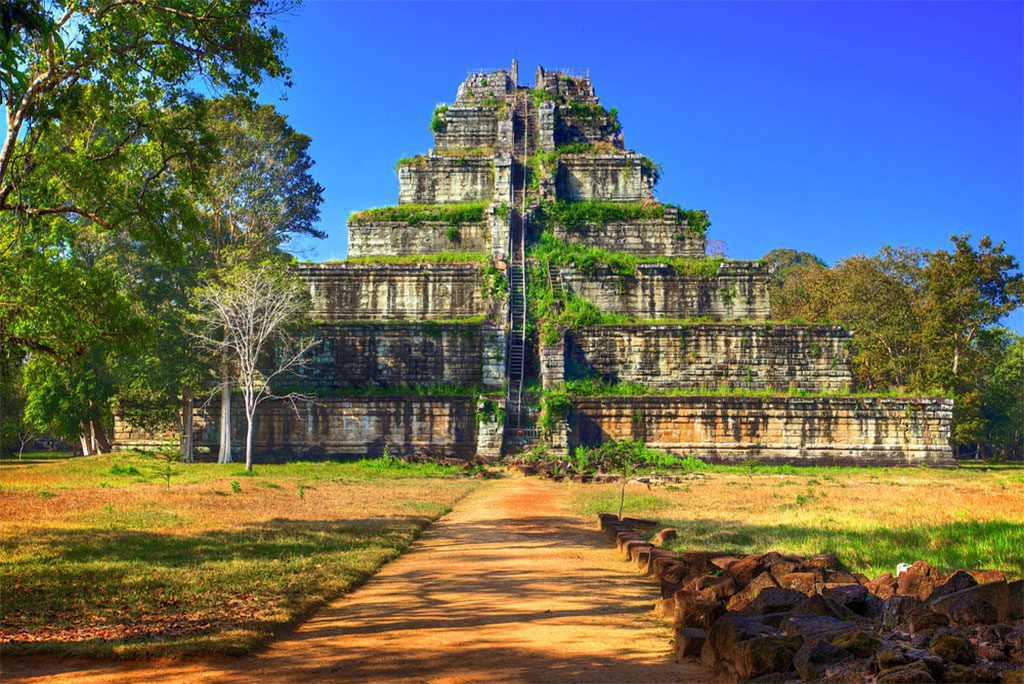
The ancient beauty of the Koh Ker Temple, a remote archaeological site in northern Cambodia. Image source: Cocos.Bounty/Shutterstock.com
Compared to Angkor Wat, Koh Ker is like a younger, less well-known sibling.
This remote part of the Cambodian forest served as the seat of the once-powerful Khmer Empire for a mere 20 years.
The 1,000-year-old stepped Prasat Thom temples tower over 30 metres above the earth, yet the signs of their splendour from the preceding two decades are still visible.
The roots of enormous teak trees have almost completely reclaimed the remains of ancient sanctuaries, and you can also witness an impressive array of fortifications from the 10th century.
Simply said, it’s a great substitute for the hustle and bustle of Angkor.
7. Koh Rong
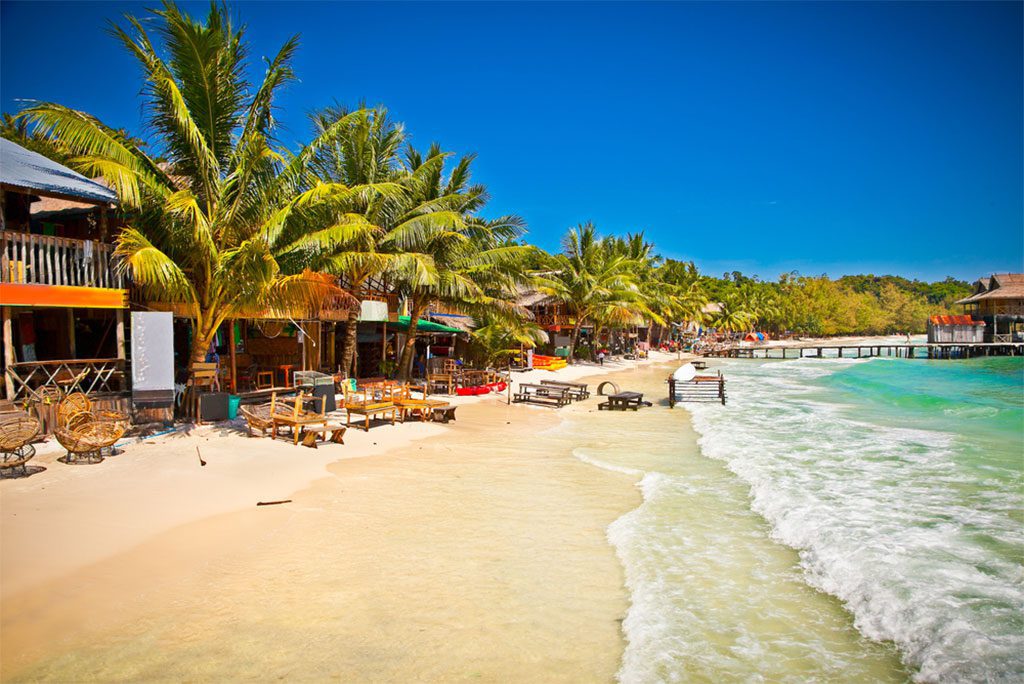
The stunning beach on Koh Rong Island in Cambodia. Image source: Aleksandar Todorovic/Shutterstock.com
An idyllic tropical paradise, this eight-shaped island may be found where the Thai Gulf and South China Sea meet.
There are 23 beaches in all, and unlike their Sihanoukville counterparts, these beaches are peaceful and undeveloped.
There are lots of chances to go hiking in the trees or snorkelling in the coral-colored water, and the shoreline is dotted with rustic, salt-sprayed cottages.
If you’re not too busy drinking beer in Koh Tuch Village, you may get a glimpse of Koh Rong’s bioluminescent waters, which shine brightly beneath the night sky.
8. Banlung
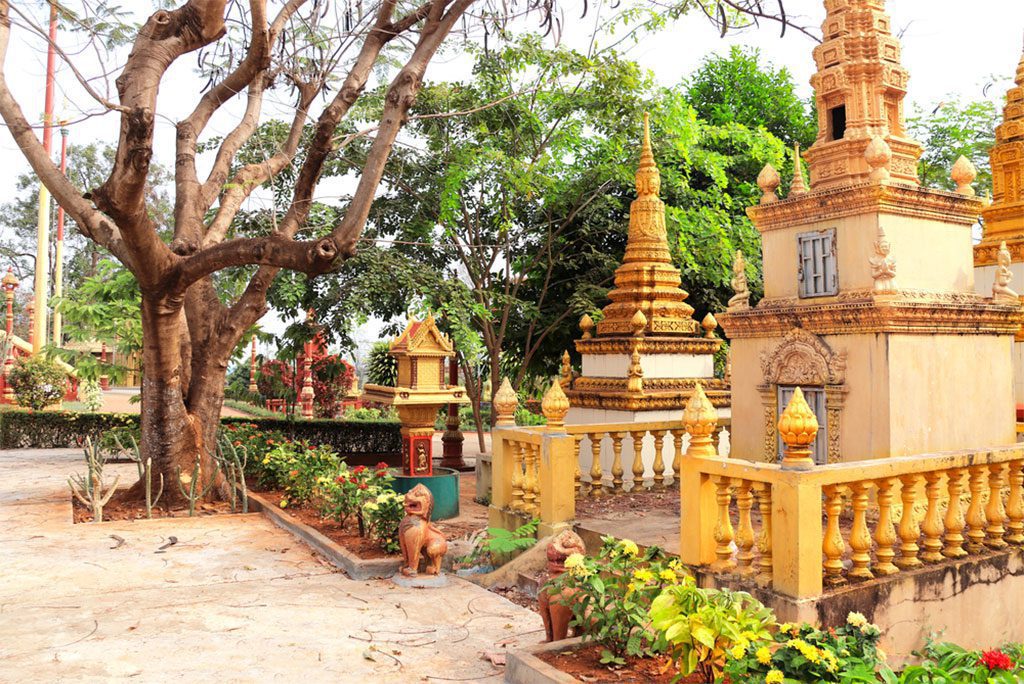
The serene beauty of a Buddhist monastery in Banlung, Cambodia. Image source: FrentaN/Shutterstock.com
Ratanakiri, the province capital, is not yet a major tourist destination.
A growing number of travellers are polishing their hiking boots in preparation for a trek to this far-flung region of the nation, where macaques and slithering snakes share the forest canopy.
Despite the town’s chaotic atmosphere, visitors may find tour operators to help them arrange excursions to nearby attractions like the picturesque Yeak Laom Volcanic Lake, the massive Cha Ong waterfall, and the province’s expansive rubber plantations.
9. Kampot

The charming village of Kampot in Cambodia. Image source: bom bo/Shutterstock.com
Even though Kampot is close to the coast, it is not a beach town. Instead, it is a river town on the delta of the Praek Tuek Chhu, which has a lot more to offer than just sand, sea, and sun.
Kick off your exploration of Kampot with a trip to the pepper fields that dot the surrounding flatlands; these farms are the main source of revenue for the city and produce the distinctive Kampot peppercorns.
There are a number of rustic fishing towns in the area that serve shrimp fries with spicy mayonnaise and lemongrass.
The Kampot train station also has some derelict colonial buildings and several rusted locomotive carcasses.
10. Mondulkiri
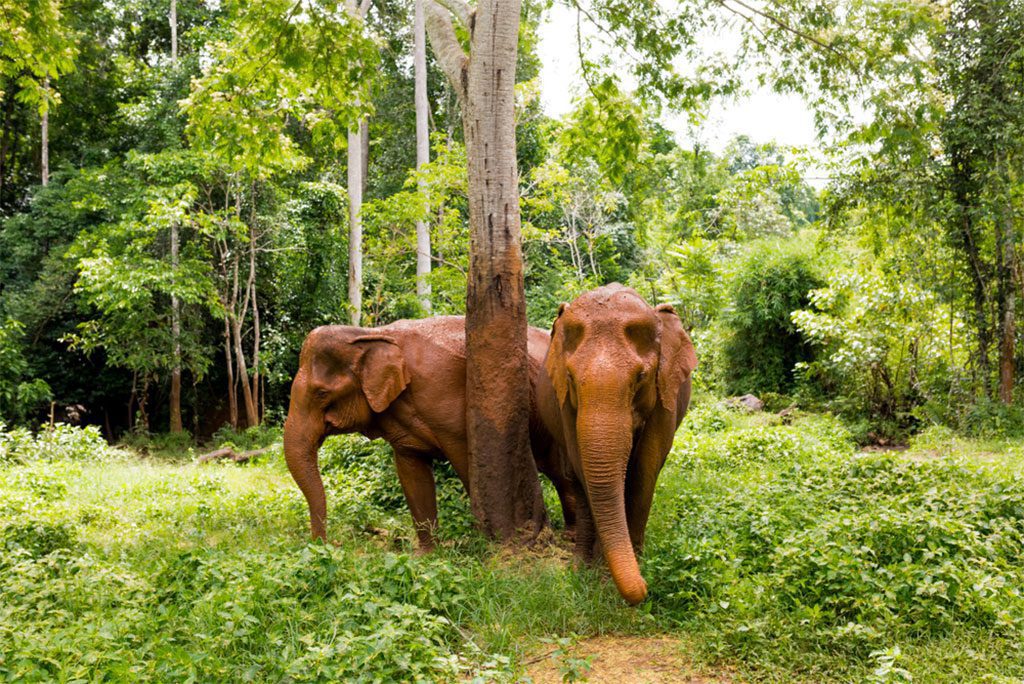
The majestic beauty of Asian elephants in a lush jungle in Cambodia. Image source: Hae-kyung Jeong/Shutterstock.com
Wild Asian elephants wander the fields and forests of the remote Mondulkiri Province, where water buffalo and wood longhouses line the edges of the wetland areas and forested peaks rise to meet the Vietnamese border.
Far from the rest of the country’s sun-baked regions and sweltering tropical environs, this eastern gem is becoming known for its groundbreaking work in elephant conservation.
Ecotourism, which includes opportunities for cultural exchange with the rustic Bunong tribespeople, is the region’s primary economic engine right now.
11. Battambang
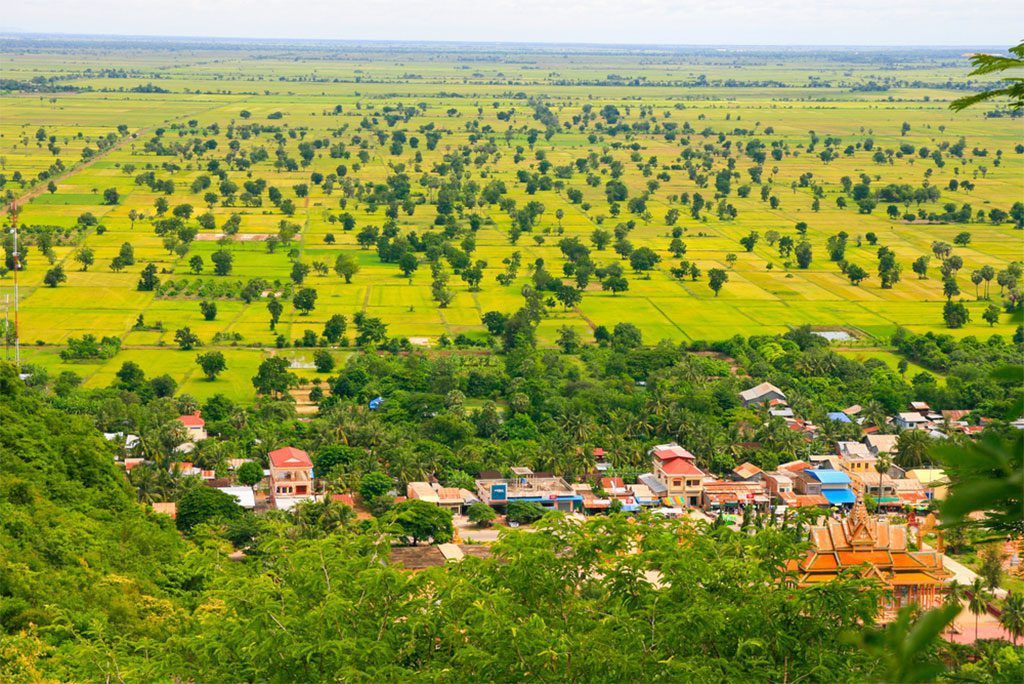
The rugged beauty of the Phonm Sampeau mountains in Battambang, Cambodia. Image source: GuoZhongHua/Shutterstock.com
Statue-dotted Battambang is a popular stop for tourists travelling around Cambodia, yet it is often considered an uncommon destination among these tourists.
The town itself doesn’t have much to offer, and the temples aren’t quite as grand as those at Siem Reap.
Yet, people keep moving to this secondary city, and we have no complaints.
Between the random Buddhist temple and the bustling Central Market, you’ll find a vibrant assortment of traveller pubs and motels.
You may visit the haunting Wat Samraong Knong, a former Khmer Rouge jail, and the fruit-bat-filled Wat Baydamram while in the Battambang area.
12. Kep
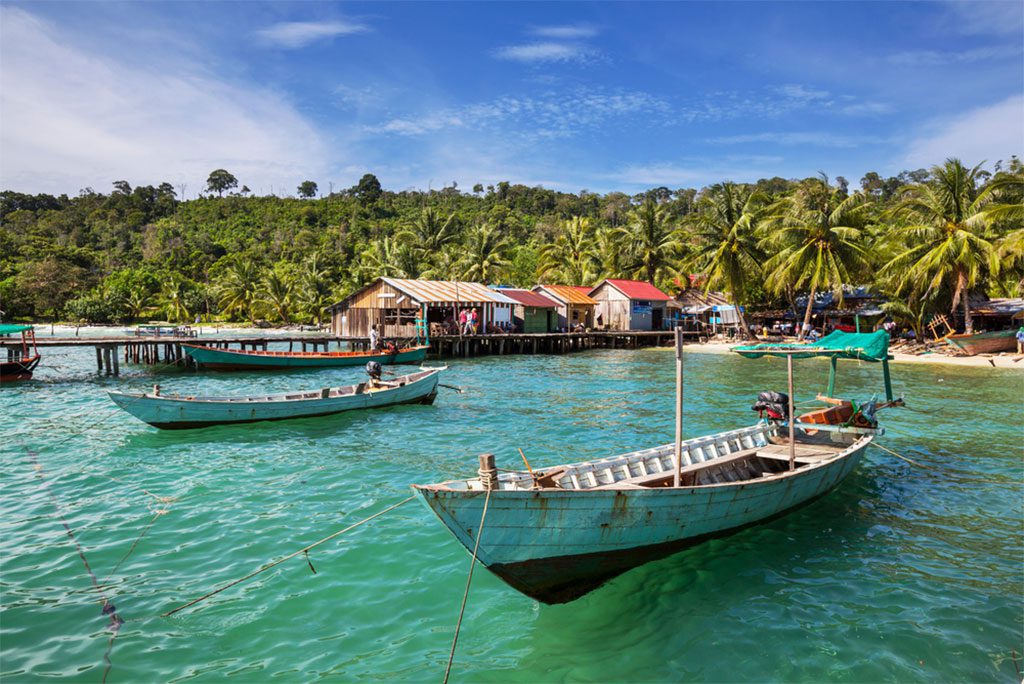
Colorful fishing boats docked at a pier in Kep, Cambodia. Image source: Galyna Andrushko/Shutterstock.com
Kep, once a glamorous destination for Cambodian nobility in the early 20th century, is now a sleepy fishing village.
The country’s premier beach hideaway was devastated by decades of war and Khmer Rouge devastation, evidence of which can still be seen in the shape of destroyed villas and burned-out hotels along the coast.
Kep has recovered, though, and the beautiful expanses of powdered golden sand around the Kep Peninsula are once again teeming with seafood restaurants and cafes.
And, of course, you can’t leave Cambodia without trying some of the fabled Kep crab.
13. Koh Thonsay
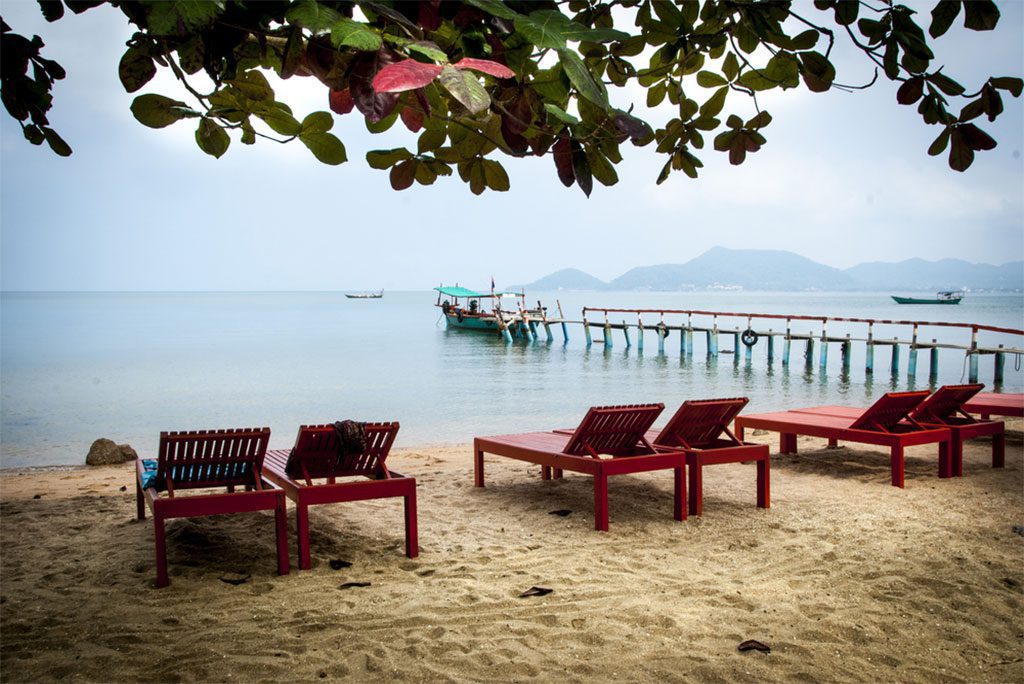
A stunning view of the crystal-clear waters surrounding Rabbit Island. Image source: Tran Qui Thinh/Shutterstock.com
One of the crown jewels of Kep Province, “Rabbit Island” is located in the Thai Gulf not far from the country’s southeastern shore.
It has all the tropical beauty one might anticipate, from gently sloping golden dunes to rows of swaying coconut trees.
Koh Thonsay is less expensive than its Land of Smiles counterparts, and it also has a lot fewer tourists. Putting on some sturdy hiking shoes and exploring the coastline paths is the best option.
At some point, you will come upon a quiet inlet with glistening beach waters and not a soul in sight, except for the odd bobbing fishing boat.
14. Koh Kong
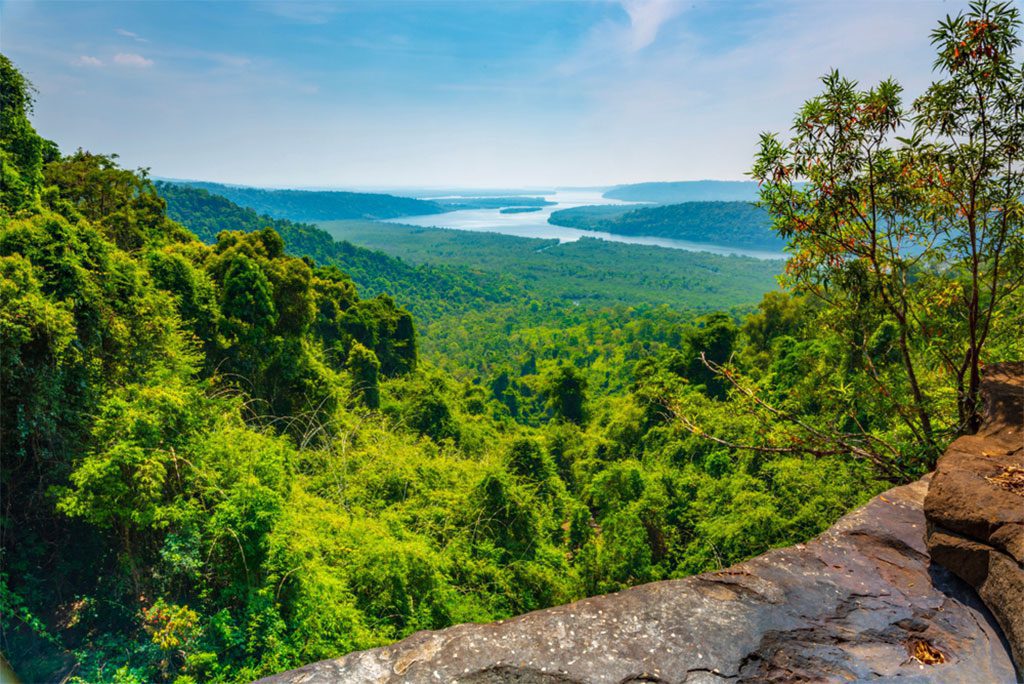
A stunning panoramic view of the highlands and seascape in Koh Kong, Cambodia. Image source: Pagnarith Sao/Shutterstock.com
The Cardamom Mountains rainforest cascades down to meet the Indian Ocean, and the place where it does is marked by the craggy, salt-sprayed rocks of the Koh Kong shoreline.
This area of Southeast Asia is a picture-perfect representation of the region’s natural beauty since it has been left undisturbed by development and the rise of contemporary tourism.
The true draws are undoubtedly the gushing waterfalls, the untamed forests, and, of course, the famed white-sand beaches of Koh Krong Island, although a scattering of casinos and shady massage parlours remain from when Krong was a smuggling route town on the Thai border.
15. Pailin
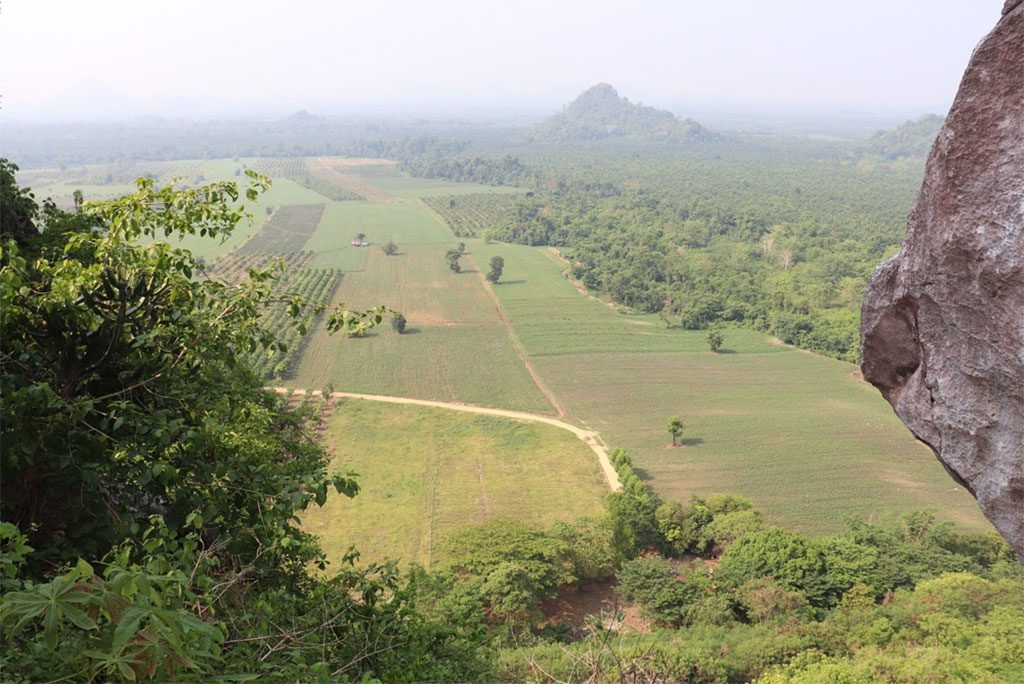
The beautiful mountainous landscape of Pailin Province in Cambodia. Image source: chanchai tupyotha/Shutterstock.com
Western Cambodia is home to the rugged Cardamom Mountains, where you’ll find Pailin.
The area was originally the country’s primary gem mining hub, and it is characterised by rolling hills of green vegetation and the jagged peaks of high hills in the distance.
As a result, it was a flashpoint for fighting during the Khmer Rouge era of the previous century, and the area has a murky past to uncover.
The area is now peaceful and nice for strolling, with easy access to the unspoiled wildlife of Roneam Daun Sam and a number of pagodas and waterfalls to enjoy on the way.


